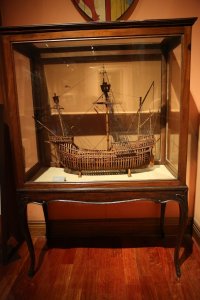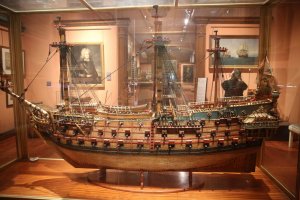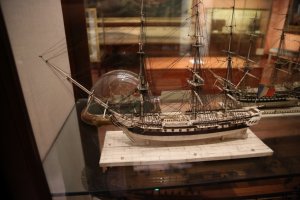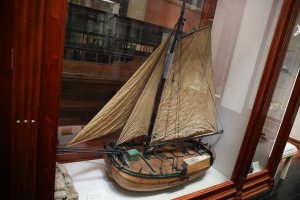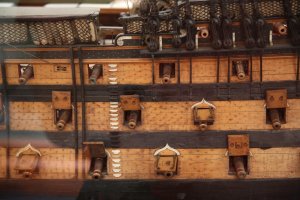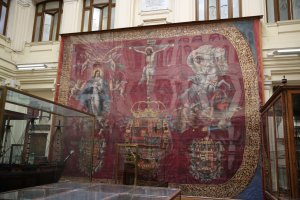-

Win a Free Custom Engraved Brass Coin!!!
As a way to introduce our brass coins to the community, we will raffle off a free coin during the month of August. Follow link ABOVE for instructions for entering.
-

PRE-ORDER SHIPS IN SCALE TODAY!
The beloved Ships in Scale Magazine is back and charting a new course for 2026!
Discover new skills, new techniques, and new inspirations in every issue.
NOTE THAT OUR FIRST ISSUE WILL BE JAN/FEB 2026
You are using an out of date browser. It may not display this or other websites correctly.
You should upgrade or use an alternative browser.
You should upgrade or use an alternative browser.
Museo Naval de Madrid
- Thread starter Jolley Roger
- Start date
- Watchers 7
Very nice models!! Wish to visit one day. Many thanks for sharing with us!
There are really some beautiful built models to see - Many thanks for sharing
- Joined
- Feb 11, 2019
- Messages
- 130
- Points
- 113

Fantastic tour. Reminds us that Spanish mariners sailed to every corner of the globe, created a vast and enduring empire, and were reckoned among the naval powers for centuries. Our history is dominated by the Anglosphere's narrative. It is important to remember that Spain was an Atlantic and Pacific power for a century before Jamestown and Plymouth.
Happy Birthday Jolley Roger!  Have a wonderful day!
Have a wonderful day!
 Have a wonderful day!
Have a wonderful day!My parents live in Spain, so my flights from Sydney will stop in Madrid. I always stop off to see the naval museum. I have been there at least 20 times, but can't get enough.Oh lord please let me win lottery so i can see these amazing museums
Unreal , awesome
Cheers snowy
Another super museum in Spain is the Military museum in Toledo. You will need a whole day to see this one.
Military Museum toledo
- Joined
- Feb 11, 2019
- Messages
- 130
- Points
- 113

AUGUSTO FERRER-DALMAU is a terrific artist working today on Spanish military subjects. Although mostly concerned with the Spanish army his sea battles are phenomenal. 

Last battle of the Glorioso https://en.wikipedia.org/wiki/Voyage_of_the_Glorioso


Last battle of the Glorioso https://en.wikipedia.org/wiki/Voyage_of_the_Glorioso
That Glorioso painting is Amazing- reminds me of a Spanish modeller who built the model of this illustrious ship from scratch on another forum. I tried to track down the build log a while ago but was never able to find it.Last battle of the Glorioso https://en.wikipedia.org/wiki/Voyage_of_the_Glorioso
Allow me to tell you the story of the marine depicted in the painting.:AUGUSTO FERRER-DALMAU is a terrific artist working today on Spanish military subjects. Although mostly concerned with the Spanish army his sea battles are phenomenal. View attachment 147376
View attachment 147377
Last battle of the Glorioso https://en.wikipedia.org/wiki/Voyage_of_the_Glorioso
Martín Álvarez Galán. He was from Extremadura, son of a land that is the cradle of conquerors. He was born in Montemolín, a small village in the province of Badajoz, in 1766. He was 24 years old when he left Montemolín heading to Seville, and there he met Lucas, a grenadier of the Marine Infantry, who managed to convince Martín to enlist in the corps. On April 26, 1790, the young Extremaduran joined the 3rd Company of the 9th Marine Battalion. Once there, due to his good aptitudes, he was selected for the elite of the corps: the grenadiers, who always fought in the vanguard opening the way for the others. At the age of 26, the young Extremaduran embarked on the ship "Gallardo". With it, Martín participated in the campaign of Sardinia between 1793 and 1794. Next, our young grenadier embarked on the "San Carlos", heading to Havana. Martín's journey through the ships of the Spanish Navy continued in 1796 with services aboard the "Santa Ana" and the "Príncipe de Asturias", two formidable ships with 112 cannons each. Finally, on February 1, 1797, Martín embarked on the ship that would bring him fame: the "San Nicolás de Bari", with 74 cannons. In October 1796, after the signing of the Treaty of San Ildefonso with France, Spain declared war on England and Portugal. Just two weeks after embarking on his new assignment, Martín found himself in the waters of Cape St. Vincent. The "San Nicolás de Bari" was accompanied by 23 other ships, 7 frigates, and several more vessels. On February 14, 1797, the Spanish squadron was intercepted by a British squadron led by Horatio Nelson, who caused the defeat of the Spanish squadron, capturing four of its ships, including the "San Nicolás de Bari". Before dying, Brigadier Tomás Geraldino entrusted Martín with the mission of defending the flag. Cornered towards the stern castle, the marines fell one by one. Finally, only Martín remained, saber in hand and clinging to the still raised flag of Spain, as its lowering would have been a signal of surrender. A British marine sergeant, William Morris, armed with a saber and a pistol and intending to lower the Spanish flag, approached Martín and ignored the Spanish grenadier's halt signal. Martín pierced him with such force that he left him impaled with his saber against a bulkhead. Unable to retrieve his saber, Martín grabbed a rifle trying to beat down a British officer and several soldiers who rushed at him. Finally, the brave Spanish grenadier was shot down by the English marines. Nelson, who had witnessed Martín's heroic action, ordered his body to be wrapped in the flag for which he had shed his blood, and arranged for it to be thrown into the sea with full honors. But when they collected his body, the British discovered that Martín was still alive. Today, the Spanish Navy honors him as one of its heroes, and in the Naval Museum of London, with utmost respect, the saber with which the Spanish grenadier defended his flag is preserved. In his native Montemolín, they dedicated a monument to him, and the painter Augusto Ferrer-Dalmau dedicated to him in 2014 the magnificent painting that accompanies these lines, titled "My Flag", in which we see Martín in his heroic feat in the Battle of Cape St. Vincent. The painting is preserved in the Navy Tercio in Cádiz.
Greetings, friends.








